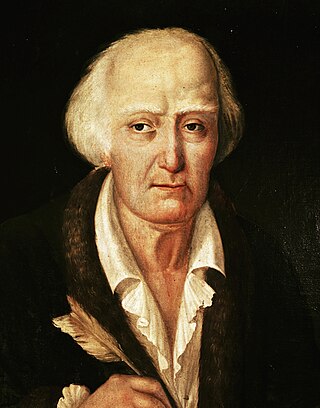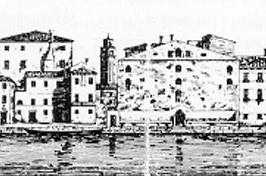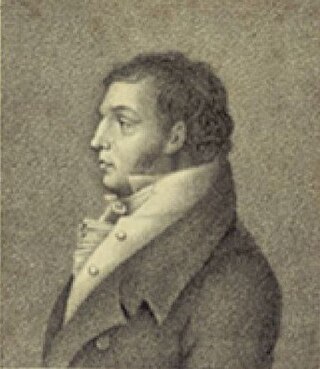Related Research Articles

Leonardo Leo, more correctly Leonardo Ortensio Salvatore de Leo, was a Baroque composer.

Gaspare Luigi Pacifico Spontini was an Italian opera composer and conductor from the classical era.
Francesco Provenzale was an Italian Baroque composer and teacher. He is considered the founder of the Neapolitan school of opera. Notably Provenzale was the teacher of famed castrato 'il cavaliere Nicolo Grimaldi '.

Tamerlano is an opera seria in three acts by George Frideric Handel. The Italian libretto was by Nicola Francesco Haym, adapted from Agostin Piovene's Tamerlano together with another libretto entitled Bajazet after Nicolas Pradon's Tamerlan, ou La Mort de Bajazet. The opera was staged by the Royal Academy of Music in the King's Theatre at the Haymarket, London.

Teseo is an opera seria with music by George Frideric Handel, the only Handel opera that is in five acts. The Italian-language libretto was by Nicola Francesco Haym, after Philippe Quinault's Thésée. It was Handel's third London opera, intended to follow the success of Rinaldo after the unpopular Il pastor fido.
The year 1798 in architecture involved some significant events.

The Teatro della Pergola is an historic opera house in Florence, Italy. It is located in the centre of the city on the Via della Pergola, from which the theatre takes its name. It was built in 1656 under the patronage of Cardinal Gian Carlo de' Medici to designs by the architect Ferdinando Tacca, son of the sculptor Pietro Tacca; its inaugural production was the opera buffa, Il potestà di Colognole by Jacopo Melani. The opera house, the first to be built with superposed tiers of boxes rather than raked semi-circular seating in the Roman fashion, is considered to be the oldest in Italy, having occupied the same site for more than 350 years.

Giuseppe Aprile was an Italian castrato singer and music teacher. He was also known as 'Sciroletto' or 'Scirolino'.
Domenico Fischietti (1725–1810) was an Italian composer.

Medea in Corinto is an 1813 opera in Italian by the composer Simon Mayr. It takes the form of a melodramma tragico in two acts. The libretto, by Felice Romani, is based on the Greek myth of Medea and the plays on the theme by Euripides and Pierre Corneille. The same subject had formed the basis for Luigi Cherubini's famous opera Médée (1797) which may have had an influence on Mayr's work. Medea in Corinto was first performed at the Teatro San Carlo in Naples on 28 November 1813 and was Mayr's greatest theatrical success.
Elizabeth Norberg-Schulz is a Norwegian-Italian operatic soprano.

Giacomo Domenico Mario Antonio Pasquale Giuseppe Tritto was an Italian composer, known primarily for his fifty-four operas. He was born in Altamura, and studied in Naples; among his teachers were Nicola Fago, Girolamo Abos, and Pasquale Cafaro. Amongst his pupils were the young Vincenzo Bellini around 1821, plus Ferdinando Orlandi. He died in Naples.
Pietro Chiarini was an Italian composer.
Antonio Maria Mazzoni was an Italian composer.

The Teatro San Angelo or Teatro Sant' Angelo was once a theatre in Venice which ran from 1677 until 1803.
Domenico Gilardoni (1798–1831) was an Italian opera librettist, most well known for his collaborations with the composers Vincenzo Bellini and Gaetano Donizetti.

Arianna in Nasso is a 1733 opera by Nicola Porpora to a libretto by Paolo Rolli, chief conductor of the Opera of the Nobility.

Carolina Bassi was an Italian contralto who knew Rossini, Meyerbeer, Donizetti and Bellini.

Eliodoro Bianchi was an Italian operatic tenor and later a prominent singing teacher. Born in Cividate al Piano and trained in Naples under Giacomo Tritto, he made his stage debut in 1793. Amongst the many roles, he created during the course of his 40-year career were Baldassare in Ciro in Babilonia and the King of Sweden in Eduardo e Cristina, both of which were composed by Rossini expressly for Bianchi's voice. He retired from the stage in 1835 and spent his later years in Palazzolo sull'Oglio, where he died at the age of 75.
References
- ↑ Everett Josephine's Composer p.274
- ↑ Elvio Giudici L'opera in CD e video 2007 p.1295 TESEO RICONOSCIUTO (dramma per musica in due atti di Cosimo Giotti) Firenze 1798 Personaggi: Egeo, Teseo, Asteria, ...